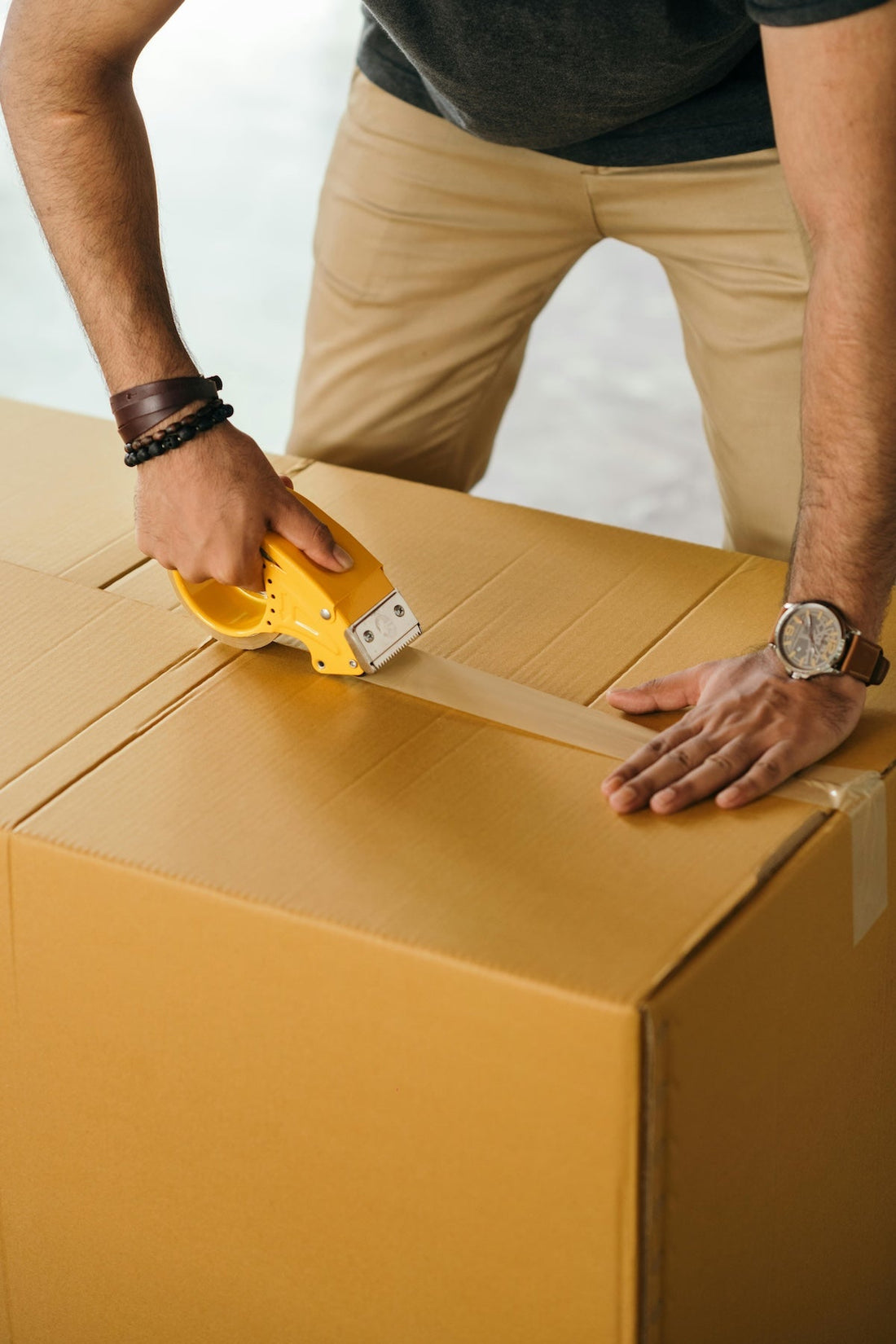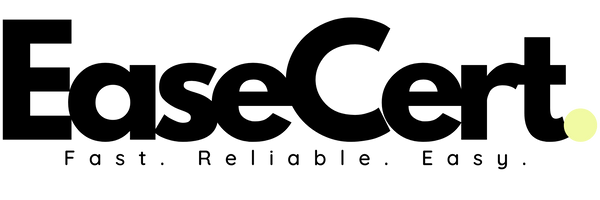
GPSR Label on Parcel: EU Import Customs Rules
The label plays a critical role in getting goods through customs and onto the European market. The General Product Safety Regulation applies to nearly all consumer products sold within the European Union, encompassing items such as children's products, furniture, gym equipment, textiles, and more. While many of these products are already governed by specific regulations with similar labelling requirements, the GPSR establishes overarching standards to ensure consumer safety. If you see a “GPSR label” on a parcel at customs, it refers to a requirement under the General Product Safety Regulation (GPSR), the EU’s baseline safety law for consumer products. For reference, download our EaseCert Product Label Template.
General Labelling Requirements
Under Article 9 of the GPSR, manufacturers / importers are obligated to provide the following information:
- Product Identification: Each product must display a type, batch, or serial number, or another element that enables its identification. This information should be easily visible and legible to consumers. If the product's size or nature makes this impractical, the information can be provided on the packaging or in an accompanying document.
-
Manufacturer Details: Manufacturers must indicate their name, registered trade name or trademark, and both postal and electronic addresses. If a different contact point is designated, its postal or electronic address should also be provided. This information should be placed on the product; if not feasible, it can appear on the packaging or in an accompanying document.
Warnings, Instructions, and Age Suitability
Article 6 of the GPSR emphasizes the importance of clear labelling regarding:
- Age Suitability: Labels should specify the appropriate age group for the product, ensuring it aligns with safety standards.
- Warnings: Necessary warnings must be provided to inform consumers of potential risks and safe usage practices.
-
Instructions for Safe Use and Disposal: Comprehensive guidelines should accompany the product to ensure its safe use and proper disposal.
What the GPSR Label Must Include
For a product to be accepted by EU customs under GPSR, the label must show:
- Manufacturer’s Name and Contact Info: Must include a postal and electronic address (e.g., email or online contact form).
- EU Responsible Person (EU RP): If the manufacturer is outside the EU, they must appoint an EU RP. Their name, postal address, and electronic contact details must be on the label.
- Product Identification: Such as model number, batch number, or serial number for traceability
- Mandatory Warnings and Safety Instructions: In the official language(s) of the EU country where the product will be sold.
- Symbols (e.g., CE marking): If the product falls under additional sector-specific legislation. Our label symbols guide explains the key label symbols required under the EU General Product Safety Regulation for consumer products, including CE marking, WEEE, EU Responsible Person, batch codes, recycling symbols, and more. It also covers resin identification codes for packaging, language requirements, and tips to avoid customs issues, ensuring your product labeling is fully compliant for the EU market.
- Physical Labelling: The label must be printed or affixed to the product itself. If not possible (due to size or function), it may go on packaging or in accompanying documentation. A QR code is not a substitute — digital labelling is allowed only in addition to physical labels.
-
Clear and Durable Placement: Labels must not be removable. Any graphics encouraging removal (e.g., scissors) should be avoided.
Language Requirements
Per Article 22, all warning and safety information must be presented in a language easily understood by consumers in the member state where the product is marketed. This typically means providing information in the official language(s) of each country where the product is sold.
Placement of Labelling Information
The GPSR stipulates a hierarchy for the placement of labelling information:
- On the Product: Preferably, all required information should be directly affixed to the product.
- On the Packaging: If affixing to the product is not possible due to size or nature, the information should appear on the packaging.
-
Accompanying Document: When neither the product nor packaging can accommodate the information, it should be included in a document that accompanies the product, such as user instructions.
Responsibility for Compliance
- Manufacturers: Primarily responsible for ensuring products are correctly labelled in accordance with the GPSR. This includes companies that design products or have them manufactured under their brand by third parties.
- Importers: Required to display their name, registered trade name or trademark, and contact information on the product.
Distributors, while not specifically mentioned regarding labelling in Article 12, must ensure that products they supply comply with the GPSR's safety requirements.
Ensuring Correct Labelling
It's advisable not to rely solely on suppliers for compliance. Instead, companies should:
- Develop and provide precise label files containing all required information.
- Conduct thorough risk assessments to determine necessary warnings and instructions.
- Consult relevant product standards, which may offer specific guidance on warning texts and symbols.
Displaying EaseCert’s Contact Details
Under GPSR Article 16(3), EaseCert’s contact details must be displayed on at least one of the following:
- Product (printed label, sewn-in tag, or direct marking)
- Packaging (box, polybag, or wrapping)
- Parcel (shipping box or external packaging)
-
Accompanying document (manual, compliance card, invoice, or hang tag)
Label Template

Customs: Why GPSR Labels Are Checked — and What Happens If They’re Missing
EU customs authorities act as the first gatekeepers to product safety. One of their core tasks is to verify product compliance with GPSR labelling. Customs officers review shipments to ensure:
- All required information is clearly present and legible
- The responsible economic operator (e.g., EU RP) is identified
- Label content matches the declared product and technical file
- Labelling language fits the destination market
If any of the above is missing or incorrect, customs may:
- Delay the shipment for inspection or clarification
- Impose penalties or request changes
- Refuse entry of the shipment into the EU
In some cases, goods may be destroyed or returned at the importer’s expense.
Choosing the Right Labelling Method
Select the most suitable method based on your business model:
- Branded apparel importer → Sewn-in labels or hang tags
- Private label clothing → Hang tags or stickers on packaging
- Online marketplace seller → Product listing + accompanying document
- Drop shipping model → Online listing + digital compliance document
Implementing Labeling at Production or Warehouse Level
A. Direct Manufacturer Labelling
- Require suppliers to print EaseCert’s details on labels, tags, or packaging.
- Include labelling requirements in supplier contracts.
- Review supplier samples to ensure compliance.
- Conduct random checks to verify correct labelling.
B. Applying Compliance Stickers at Warehouse Level
- Use pre-printed compliance stickers with EaseCert’s details.
- Train warehouse staff to apply stickers before dispatch.
- Conduct spot checks for consistency.
C. Compliance for Online Marketplaces
-
Update product listings to include:
- Manufacturer’s details
- EaseCert’s details (if the manufacturer is outside the EU)
- Product identifier (SKU, EAN, or model number)
- Required safety warnings
- Provide compliance details via email or invoice upon purchase.
Recycling Symbols: What They Mean and How to Use Them
Understanding recycling symbols on packaging can be confusing, but it’s essential for proper waste management and environmental protection. Our guide explains common recycling symbols, including the On-Pack Recycling Label (OPRL), plastic resin codes, and European product markings like the CE and UKCA marks. EaseCert ensures your product labeling meets EU requirements, including safety warnings, usage instructions, and compliance markings, helping you avoid fines and support consumer clarity.
Digital Compliance Document
Article 19 of the GPSR mandates that economic operators selling products online or through distance sales clearly and visibly display specific information, including manufacturer details, responsible person details (if applicable), product identification, and warning or safety information. Providing a QR code is not sufficient to comply with the labelling obligations for GPSR products. However, a digital compliance document can be made accessible on a voluntary basis and include:
- Product Information (Name, model, SKU, batch number, images)
- Manufacturer & Importer Details (Company name and contact info)
- EaseCert’s Details (As the EU Authorised Representative)
- Declaration of Compliance (Confirming adherence to GPSR & EU regulations)
- Technical Documentation Overview (Risk assessments, safety standards, test reports)
- Safety Warnings & User Instructions (Multi-language warnings where necessary)
- Incident Reporting Process (As per GPSR Article 20)
- Digital Compliance Access (QR Code linking to compliance document)
Ongoing Compliance & Monitoring
Regular Audits:
- Review labelling and compliance documentation every six months.
- Monitor updates in EU safety regulations.
Handling Compliance Requests:
- EaseCert will provide compliance documents upon request by authorities.
- Importers must inform EaseCert of any regulatory concerns.
Incident Reporting (GPSR Article 20):
- Report safety issues to EaseCert, we will then report to the EU Safety Business Gateway.
-
Online marketplaces must document and escalate consumer safety complaints.
Consequences of Non-Compliance
Failure to adhere to GPSR labelling requirements can lead to severe repercussions, including product recalls. Such actions can be costly, and there may not always be an opportunity to rectify labelling issues post-distribution.
How to Avoid EU Customs Rejections
To reduce the risk of your product being held or rejected at the border:
- Use an EU Responsible Person: If you’re a non-EU manufacturer, appoint a compliant EU RP with experience in GPSR documentation and labelling review.
- Verify Your Label Before Shipping: Confirm it meets the criteria from Article 9 of the GPSR, especially product traceability, language, and contact requirements.
- Prepare Proper Technical Documentation: GPSR requires a technical file that supports the label and includes safety assessments. Keep it ready for inspection.
- Test the Label’s Placement and Durability: Labels should be affixed securely to withstand transport and handling without detaching.
- Ensure Language Accuracy: Include any safety instructions or warnings in the correct language(s) for the destination country, this is often overlooked and frequently flagged by customs.
-
Coordinate with Your Logistics Provider: Share clear shipping documentation with your logistics partner so they can support compliance at the point of entry.
Summary
The GPSR label is more than a compliance box, it’s your product’s passport into the EU. Customs authorities rely on it to confirm product safety, traceability, and legal market access. Incomplete or non-compliant labels are among the most common causes of customs holds.
At EaseCert, we help importers and manufacturers prepare for these requirements, from labelling reviews to acting as your EU Responsible Person. For reference, download our EaseCert Product Label Template. We ensure your documentation is in order, so your products clear customs without surprises.
Learn More About GPSR:
